To mark the exclusive launch of nine new works by Fred Ingrams, painted between The Fens in Norfolk and the Flow Country in Scotland, our Curator Phin Jennings spoke with the artist about the meaning and importance of the two landscapes and how they impact his practice.
By Phin Jennings | 10 Oct 2023
“We’ve only just got the internet here,” Fred Ingrams tells me on our first Zoom call. It’s just as well. I am writing a feature – this feature – to accompany a launch of his new paintings and, as he is in the process of moving his home and studio, we have decided to speak on a series of calls rather than an in-person visit. He is moving from The Fens, the distinctively flat landscape that he has become known for his paintings of, to a new spot on Norfolk’s north coast. He doesn’t miss a beat when I ask him whether he feels better or worse off for being connected to Wi-Fi: “worse.”
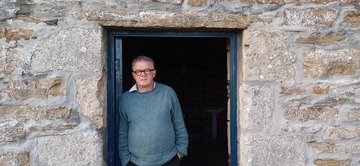
During the course of the move we have three conversations in as many weeks. Ingrams spends this time between Norfolk and his other home, a rented house in Caithness, Scotland. 500 miles north, the Scottish Flow Country is familiar territory to the artist in many ways. Like The Fens, it is a flat and marshy landscape made up mostly of peat. He has painted The Fens for 15 years and spent a week of each month painting in the Flow Country for the last five years. His works have always felt to me like more than just beautiful images and, through our conversations, he reveals many hidden facets of the two places and, by extension, the way that he paints them. I learn about their physical makeup, their history and the varying political dynamics and attitudes that have governed them over the years. Alongside our calls, he sends me photographs of some of his favourite painting spots, in both of his studios in Norfolk and Scotland and in the great outdoors. I have interspersed these images, along with Ingrams’ paintings, with this article.
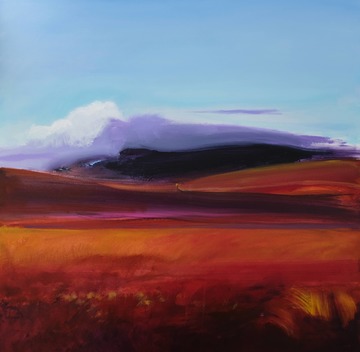
On our first call, I apologise for the hum of voices that he can hear in the background from my end. I’m in a busy co-working space and competing to be heard with a room full of people on calls of their own. Knowing that the artist is happiest with no internet connection, I am not surprised by his reaction: “human beings shouldn’t have to live like that.” In many ways, his job is far less comfortable than mine. Painting outside, there is always a blight to contend with. If it isn’t the cold or the rain then it’s the gnats. “You’re always battling something,” he laughs. The idea of him painting in a mesh hood – which he assures me he wears when the insects are particularly bothersome, but doesn’t send a photograph of – makes me laugh too, but there is something serious beneath it.
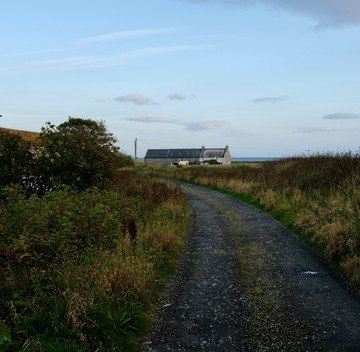
Ingrams is interested in the idea of the sublime. The word is now mostly used for straightforwardly pleasant things and experiences but its original usage, favoured by great 19th century landscape painters like Peder Balke, Caspar David Friedrich and J. M. W. Turner, is less simple. It has to do with being awestruck by the world, experiencing it as not only beautiful but also powerful and formidable. Turner is said to have once tied himself to a ship’s mast in a storm in order to experience nature in all of its brutal glory. In the studio, the landscape is merely a beautiful image; painting en plein air, as Ingrams often does, it is experienced in all of its complexity. Though he might not take it to Turner’s lengths, he spends a lot of his painting time face-to-face with what he calls “the last wilderness in Europe”, the beauty of which is interwoven with elements of discomfort and trepidation.

He hastens to add that this feeling of trepidation comes more from the beholder than from the landscape itself, and is historically contingent: “each era has a different way of looking at the landscape.” In the 18th century, for example, mountainous areas were thought of as treacherous and not to be visited or particularly admired. Now, these places, like the Lake District and Peak District, are visited and painted by many.
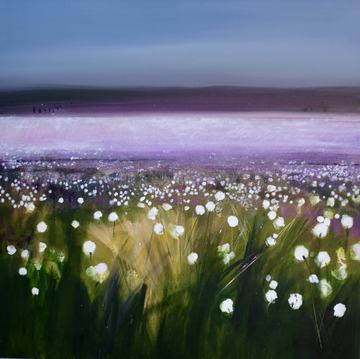
This view of the landscape as a socially constructed entity is the main thing that I take away from my conversations with Ingrams. He tells me many stories of how people, governments and societies have shaped the way we think about and inhabit the natural world: “there’s nothing natural about it […] this place is an absolute minefield.”
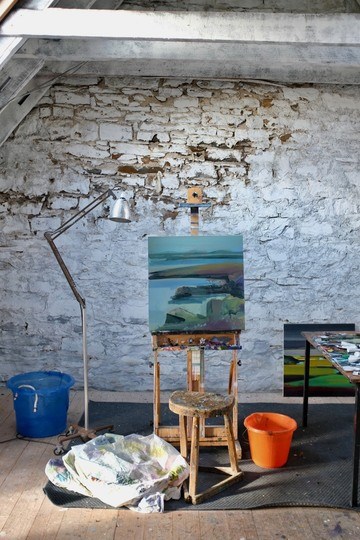
For example the first sluice, a piece of infrastructure designed to keep The Fens from flooding, was built in the Norfolk village of Denver in 1651. Now, a new and improved Denver Sluice continues to pump millions of gallons of North Sea water out of the marshes each day. In the 18th century, the Highland Clearances forced Scottish highlanders out of their homes to make room for agriculture. During the 1970s, government tax incentives in the Flow Country encouraged landowners to cover the areas with pine trees as part of a misguided, now-overturned plan to turn the marshland into woods. Today, locals, authorities and landowners in Norfolk and Caithness clash over a host of issues including the Right to Roam, rewilding and the building of new housing and water reservoirs. The more I learn about the history and politics of his subject, the more I see it as a product of human attitudes.
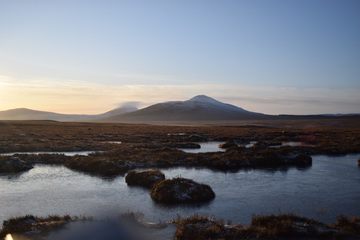
Now, weeks after my conversations with Ingrams, I can see this in his paintings. The ruler-straight horizons, the white-spotted cottongrass and the hazy skies are charged with more meaning than before. The way that he renders each landscape is inextricable from the way that he thinks of it; how it came to be and the dynamics that govern it today. “I’m choosing what to see, I’m choosing what I want to record, I’m leaving out lots of things, I’m putting in things,” he tells me during our final call. Each of these decisions comes from a richness of knowledge and, beyond that, feeling about the world that surrounds him.



